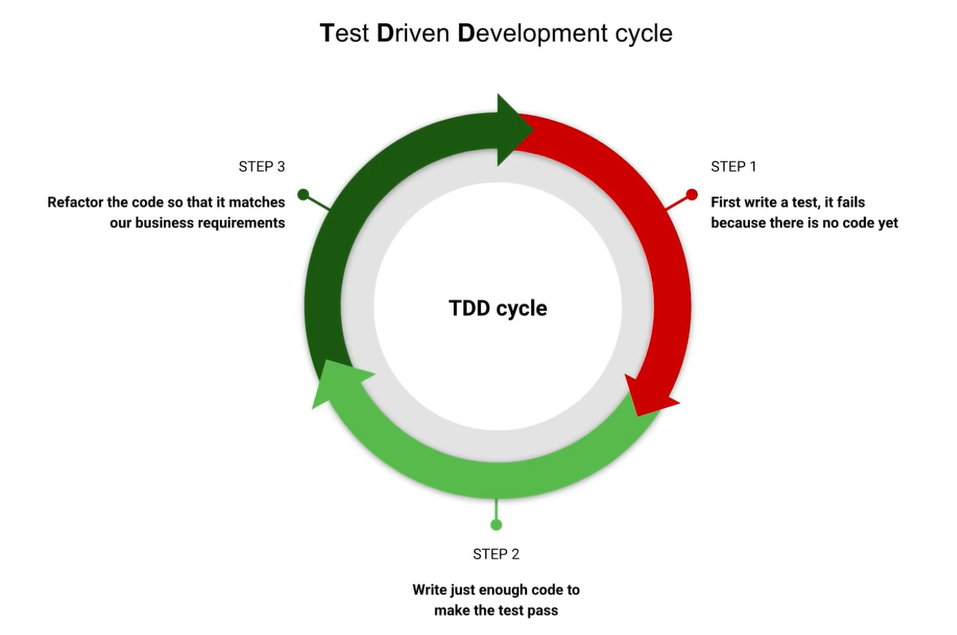
The Test-Driven Development (TDD) cycle typically follows a series of steps, commonly known as the “Red-Green-Refactor” cycle. Here’s an overview of the TDD cycle:
- Write a Test: In TDD, you start by writing a test that defines the desired behavior or functionality of a small unit of code. The test is written before any implementation code exists. The initial test is expected to fail, which is indicated by a “red” status, as there is no code to fulfill the specified behavior.
- Run the Test: Run the test to ensure that it fails, confirming that it accurately reflects the missing functionality. This step helps validate that the test is working correctly and detects any errors or issues with the test itself.
- Write the Minimum Code: Write the minimum amount of code necessary to make the failing test pass. This is often referred to as the “production code” or “implementation code.” The goal is to write the simplest code that satisfies the test. The test should now pass, turning to a “green” status.
- Run All Tests: Run all the tests, including the one you just wrote, to verify that the newly added code didn’t break any existing functionality. This step ensures that the overall system remains functional and that the new code integrates correctly.
- Refactor: Refactoring is the process of improving the code’s structure, design, and readability without changing its behavior. After the tests pass, you can refactor the code with confidence, knowing that if anything breaks, the failing test will alert you. Refactoring helps improve the code’s quality, maintainability, and performance.
- Repeat: Repeat the cycle by writing the next test for the next small unit of functionality you want to implement. This process continues in an iterative manner, gradually building up the functionality of the system through a series of small, test-driven steps.
The TDD cycle promotes incremental development, where code is written to satisfy specific tests and is continually improved and validated. This approach ensures that the codebase remains testable, maintainable, and reliable throughout the development process. The cycle helps catch bugs early, supports code quality, and facilitates the creation of modular and loosely coupled software components.

